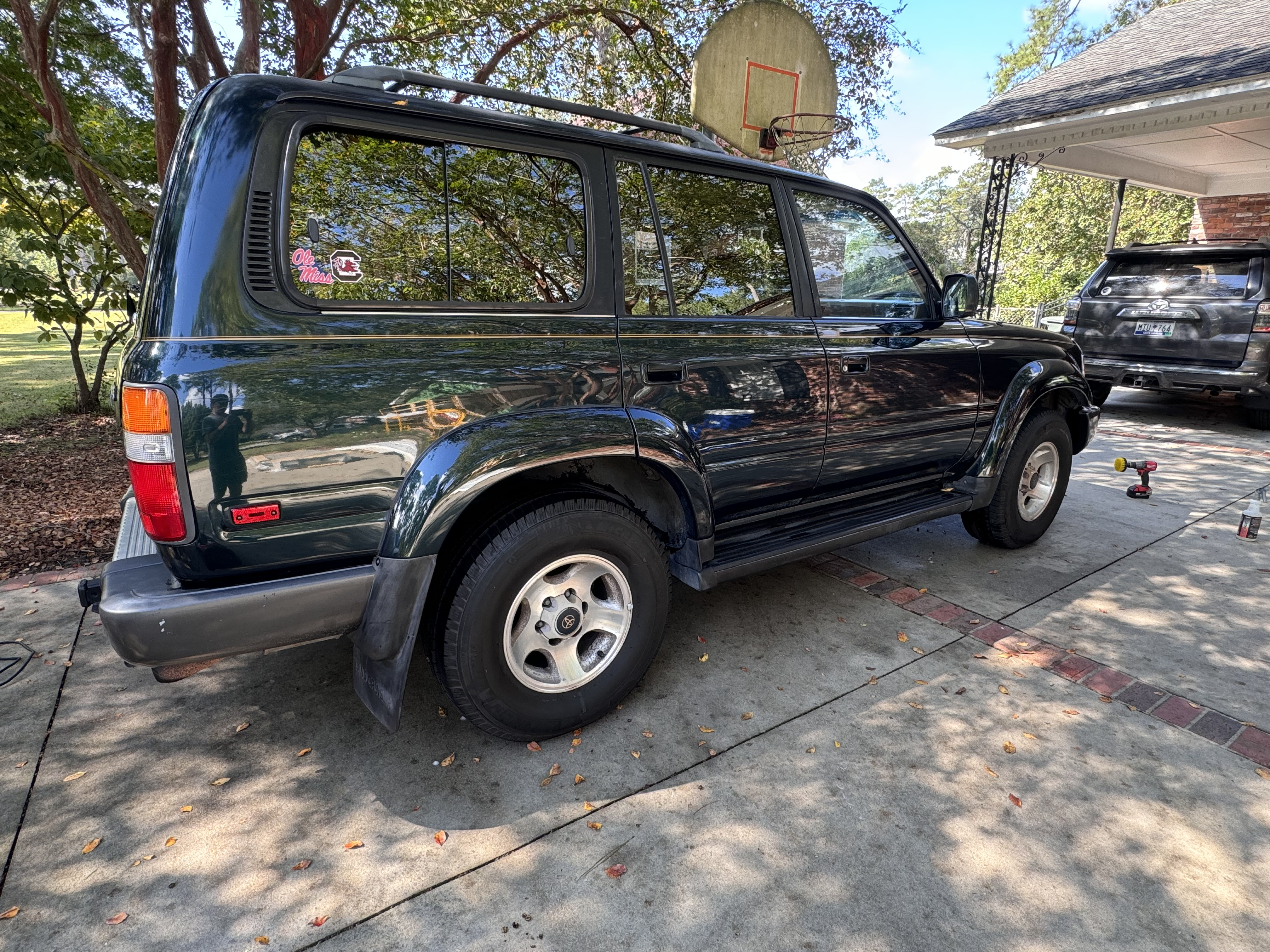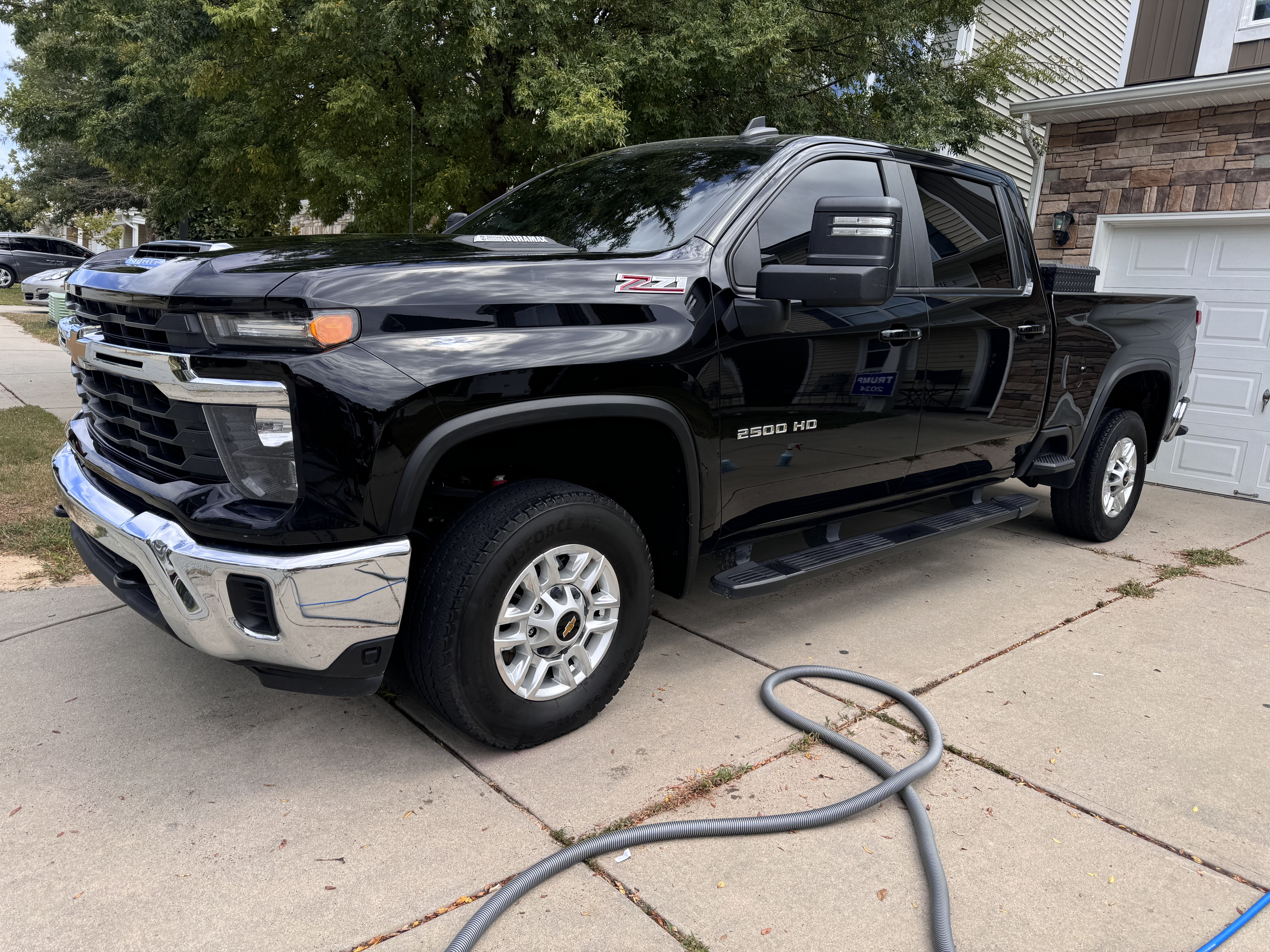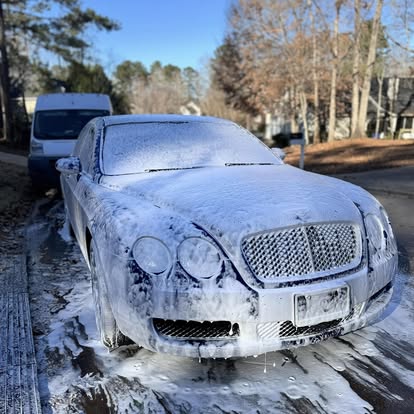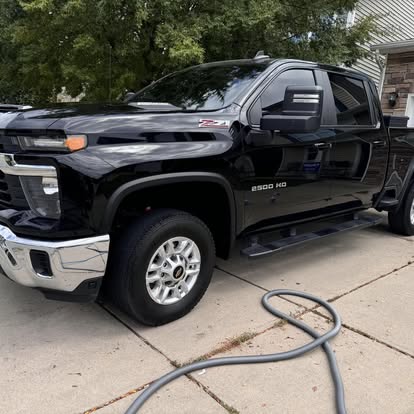Professional Ceramic Coating: What to Expect During the Complete Process
You've decided to invest in professional ceramic coating for your vehicle—excellent choice! But what happens next? Understanding the complete ceramic coating process helps you appreciate the expertise, time, and attention to detail required to deliver the stunning, long-lasting results you expect.
Unlike quick-service car washes or even standard detailing, professional ceramic coating is a multi-day process involving meticulous preparation, expert application, and proper curing. In this comprehensive guide, we'll walk you through every step of the professional ceramic coating service, explain why each phase matters, and help you understand what separates quality work from rushed, subpar applications.
What Makes Ceramic Coating "Professional"?
Before diving into the process, it's important to understand what distinguishes professional ceramic coating from DIY or amateur applications:
Professional-Grade Products
Professional ceramic coatings contain significantly higher concentrations of active ingredients (typically 85-95% SiO2) compared to consumer-grade products (30-50% SiO2). These formulations require specific application techniques, controlled environments, and certified training to apply correctly. They're not available to general consumers and deliver dramatically superior durability and performance.
Manufacturer Certification
Reputable ceramic coating manufacturers like Gtechniq, CarPro, Ceramic Pro, IGL Coatings, and Modesta require technicians to complete rigorous training and certification programs. These certifications ensure applicators understand proper surface preparation, application techniques, and product-specific requirements.
Professional Facility and Equipment
Proper ceramic coating application requires a controlled environment with:
- Temperature control (65-75°F optimal)
- Humidity control (40-60% relative humidity)
- Proper lighting for defect identification and inspection
- Dust-free or filtered air environment
- Professional-grade paint correction equipment
- Proper ventilation for chemical safety
Expertise and Experience
Professional ceramic coating specialists have applied hundreds or thousands of coatings across various vehicle types, paint conditions, and challenges. This experience allows them to adapt techniques, recognize potential issues, and deliver consistent, flawless results.
The Complete Professional Ceramic Coating Process
Step 1: Initial Consultation and Vehicle Assessment (30-60 Minutes)
Your ceramic coating journey begins with a thorough consultation where professionals:
- Inspect paint condition: Examine your vehicle's paint for swirls, scratches, oxidation, staining, and other defects. This determines the extent of paint correction needed.
- Discuss expectations: Understand your goals for protection, appearance, and budget. Professionals explain what's achievable and set realistic expectations.
- Review options: Present different coating packages, product options, and coverage areas based on your vehicle and needs.
- Explain maintenance: Detail the maintenance requirements to ensure coating longevity and performance.
- Provide timeline: Give you an accurate estimate of how long the entire process will take (typically 3-5 days).
- Answer questions: Address any concerns about the process, products, or expected results.
Quality professionals take time during consultation to educate you and ensure you're making an informed decision. Be wary of shops that rush through consultation or provide vague answers.
Step 2: Deep Cleaning and Decontamination (3-5 Hours)
Proper paint preparation is absolutely critical to ceramic coating success. This phase removes all contaminants that would prevent the coating from bonding properly:
Exterior Hand Wash
Your vehicle receives a thorough hand wash using pH-neutral soap and the two-bucket method. Every panel, crevice, and surface is carefully cleaned. Wheels are deep-cleaned with dedicated products and brushes to remove brake dust and road grime.
Clay Bar Treatment
Even after washing, contaminants like industrial fallout, overspray, tree sap residue, and embedded particles remain bonded to your paint. Professional detailers use specialized clay bars or clay mitts to mechanically remove these contaminants, leaving the surface perfectly smooth.
Iron Decontamination
Iron particles from brake dust and industrial fallout embed into your paint's pores. Chemical iron removers dissolve these particles, which bleed out as purple liquid. This step is essential for preventing future rust spots and ensuring proper coating adhesion.
Tar and Adhesive Removal
Specialized solvents safely remove tar spots, adhesive residue from stickers or decals, and other stubborn contaminants that regular washing can't eliminate.
Panel Wipe and Solvent Wash
After decontamination, the entire vehicle receives a panel wipe using dedicated prep sprays or isopropyl alcohol solutions. This removes any remaining oils, waxes, or residues that could interfere with coating bonding.
At this stage, your paint is perfectly clean and ready for correction—you can actually hear a squeaking sound when you run your fingers across properly decontaminated paint.
Step 3: Paint Correction (4-20+ Hours)
Paint correction is often the most time-consuming phase of professional ceramic coating, but it's also the most transformative. Since ceramic coating amplifies whatever's beneath it, paint must be perfected first.
Defect Identification
Under high-intensity lighting, technicians map out all paint defects including swirls, scratches, holograms, buffer trails, oxidation, water etching, and other imperfections. This assessment determines the correction strategy.
Paint Thickness Measurement
Using precise gauges, professionals measure paint thickness across all panels. This ensures enough clear coat remains for safe correction and identifies areas requiring extra care (edges, body lines) or areas previously repainted.
Multi-Stage Correction
Paint correction typically involves multiple stages:
- Heavy Cutting (if needed): Removes deep scratches, severe swirls, and oxidation using aggressive compounds and pads. Not all vehicles require this step.
- Medium Polishing: Removes moderate defects and refines the finish after heavy cutting.
- Fine Polishing: Creates the final finish, removing fine hazing and achieving mirror-like clarity and gloss.
- Jeweling/Finishing: Some professionals add a final jeweling step for show-car level perfection.
Each stage uses specific combinations of machines (rotary or dual-action polishers), pads (foam, wool, or microfiber), and compounds designed for specific defect types and paint characteristics.
Paint Correction Time Requirements
- Light correction (newer vehicles, minimal defects): 4-8 hours
- Moderate correction (typical daily drivers): 8-12 hours
- Heavy correction (neglected or heavily swirled paint): 12-20+ hours
Paint correction can't be rushed. Each panel requires careful attention, multiple passes, and frequent inspection to ensure perfect results without damaging your paint.
Step 4: Final Preparation (30-60 Minutes)
After paint correction, technicians perform a final preparation to ensure perfect coating application:
- Remove polishing oils: Panel wipe removes all traces of polishing oils that could interfere with coating bonding
- Inspect under proper lighting: Final inspection identifies any remaining defects requiring attention
- Mask sensitive areas: Rubber trim, plastic, badges, and other non-painted surfaces are carefully masked
- Environmental preparation: Facility temperature and humidity are optimized for coating application and curing
- Prepare coating materials: Coating products are brought to optimal temperature and application materials are prepared
Step 5: Ceramic Coating Application (3-6 Hours)
Now comes the moment everything has been building toward—ceramic coating application:
Panel-by-Panel Application
Professionals apply ceramic coating systematically, typically starting from the roof and working downward. Each panel receives careful attention:
- Product application: Small amounts of coating are applied to specialized applicator blocks or pads
- Cross-hatch pattern: Coating is applied in overlapping vertical then horizontal passes to ensure complete, even coverage
- Leveling: After flash-off time (typically 30-60 seconds), the coating is carefully leveled using clean microfiber towels
- Inspection: Each panel is inspected for proper coverage, checking for high spots, streaks, or missed areas
- Edge work: Extra attention is paid to panel edges, gaps, and seams where coating can pool
Multiple Layers (If Included)
Premium coating packages often include multiple layers for enhanced durability and protection. Each layer requires:
- Proper flash-off time between layers (1-4 hours depending on product)
- Panel preparation between layers
- Careful application to build uniform thickness
Additional Surface Treatment
Depending on your package, professionals may also apply ceramic coating to:
- Wheels: Face, spokes, and inner barrels for brake dust protection
- Glass: Windows and windshield for enhanced water repellency
- Trim: Plastic and rubber components for UV protection and restoration
- Chrome: Brightwork protection and easier maintenance
Step 6: Curing and Quality Control (24-72 Hours)
After application, ceramic coating requires specific time and conditions to cure properly:
Initial Curing
- Most coatings require 12-24 hours before the vehicle can be moved
- During this time, the coating forms its molecular bond with the paint
- Temperature and humidity are maintained within optimal ranges
- The vehicle remains in a controlled, dust-free environment
Full Cure Timeline
- Coatings typically reach 80% hardness within 24-48 hours
- Full cure (maximum hardness and properties) takes 7-14 days depending on product
- During the cure period, specific care instructions must be followed
Final Quality Inspection
Before delivery, professionals perform a comprehensive quality inspection:
- Verify uniform coverage across all coated surfaces
- Check for any high spots or imperfections requiring correction
- Inspect edges, seams, and difficult areas
- Verify proper hydrophobic performance with water testing
- Document the work with before/after photos
- Remove all masking and ensure no residue remains
Step 7: Client Education and Delivery (30-45 Minutes)
When you pick up your vehicle, quality professionals provide comprehensive education:
- Care instructions: Detailed explanation of post-application care during the cure period
- Maintenance guidelines: How to wash, what products to use, and what to avoid
- Warranty information: Complete explanation of warranty coverage, terms, and maintenance requirements
- Maintenance products: Recommendations for or provision of ceramic-safe maintenance products
- Schedule follow-ups: Information about recommended boost applications and annual inspections
- Contact information: How to reach them with questions or concerns
Post-Application Care: The Critical First Week
The first 7-14 days after application are critical to achieving optimal coating performance:
Immediate Post-Application (First 24-48 Hours)
- Keep vehicle dry—no washing or water exposure
- Park in covered area away from rain, sprinklers, or dew
- Avoid touching or leaning against the coating
- Don't drive the vehicle if possible (or minimal driving only)
Cure Period (First 7-14 Days)
- Avoid washing unless absolutely necessary; spot clean only if required
- If rain exposure occurs, gently dry the vehicle with plush microfiber towels
- Avoid parking under trees (sap and bird droppings risk)
- Don't apply any products to coated surfaces
- Avoid automated car washes or high-pressure washing
First Wash (After Cure Period)
- Use only pH-neutral, ceramic-safe car soap
- Hand wash using the two-bucket method with soft microfiber mitts
- Avoid pressure washing in the first month
- Dry with plush microfiber towels or forced air
What to Expect: Results and Performance
After professional ceramic coating application, you'll immediately notice:
- Mirror-like gloss: Dramatic enhancement of paint depth and shine
- Extreme hydrophobic properties: Water beads into tight spheres and sheets off effortlessly
- Enhanced color: Paint colors appear deeper, richer, and more vibrant
- Slick surface: Smooth-as-glass feel when you run your hand over the paint
- Easier cleaning: Dirt and contaminants rinse away with minimal effort
- Stays cleaner longer: Coating's non-stick properties mean your vehicle doesn't get as dirty
Cost Justification: Why Professional Ceramic Coating is Worth It
Professional ceramic coating represents a significant investment, but understanding what you're paying for helps justify the cost:
What's Included in the Price
- Professional-grade coating products ($200-500 material cost)
- Expert labor (20-40+ hours of skilled work)
- Specialized equipment and facility costs
- Comprehensive paint correction
- Multi-year warranty protection
- Professional expertise and certification
- Follow-up support and guidance
What You're Avoiding
- DIY mistakes that require professional correction ($500-1,500+)
- Inferior products with poor longevity requiring frequent reapplication
- Inadequate paint correction leaving defects beneath the coating
- Application errors (high spots, streaking) that diminish results
- Lack of warranty protection if issues arise
Conclusion: The Professional Ceramic Coating Experience
Professional ceramic coating is far more than simply "applying a product" to your vehicle. It's a comprehensive, multi-day process requiring expertise, patience, attention to detail, and professional-grade products and equipment. From initial consultation through final delivery, every step is designed to deliver the stunning, long-lasting results you expect from your investment.
Understanding this process helps you appreciate why professional ceramic coating costs what it does and why attempting DIY application rarely delivers comparable results. When you choose a qualified, certified professional, you're not just buying a product—you're investing in expertise, experience, and peace of mind knowing your vehicle receives the highest level of protection and care available.
Ready to experience the professional ceramic coating difference? Contact us today to schedule your consultation. We'll walk you through our process, inspect your vehicle, and create a customized protection plan that delivers the stunning results you deserve. Your vehicle is an investment worth protecting—let our professionals make it happen!




